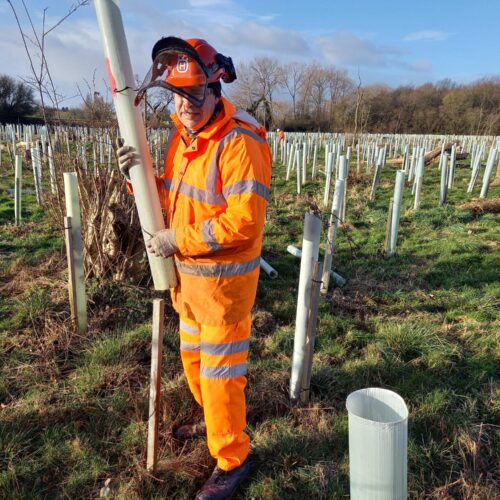Thomson Habitats has carried out great crested newt (GCN) mitigation and habitat creation works on a large residential development site in Basildon, Essex.
To enable ecologists from Parsons Brinckerhoff to carry out their newt translocation programme within the specifications of their GCN licence, we installed 1.5km of semi-permanent newt fencing and 2km of temporary newt fencing, with over 400 pitfall traps.
We sensitively cleared vegetation to facilitate the wildlife fence installation using a low ground-pressure (LGP) track loader, prioritising the clearance to avoid nesting birds, and therefore ensuring that there were no delays for our client.
This multi-element project included extensive habitat creation works to the adjacent receptor site in preparation to receive the new(t)ly trapped residents. We created and planted three ecologically diverse ponds, three earth bunds, installed hibernacula, log piles, and a brash corridor to provide refugia and connectivity within the receptor site.
Planting over 2000 hedgerow whips and installing 300m of stock fencing provided screening and a barrier between the development and the receptor site, creating a more scenic area which can be enjoyed by future residents.
Working on this large site was made much easier by the use of our Thomson Interactive Mapping (TIM) mobile mappers. We pre-loaded the site boundary coordinates onto the mappers enabling the site team to mark out the fence lines accurately and ensure no future disruptions for the client.










